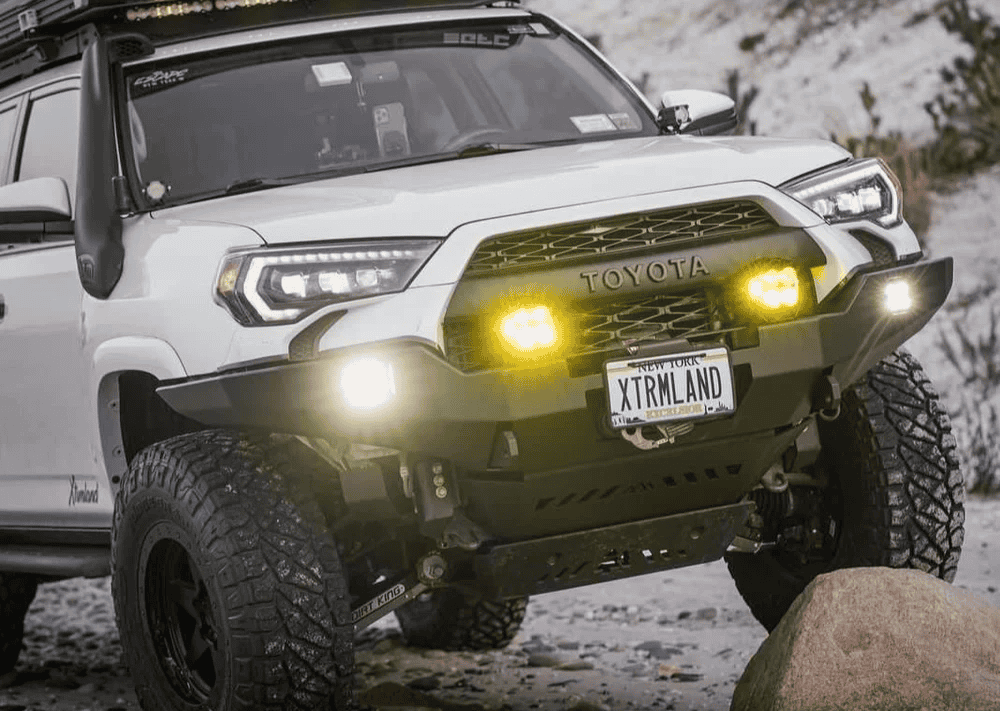Overland Vehicles

A 12v accessory outlet provides convenient low voltage power for portable fridges, inflators, radios, and chargers. The common automotive style socket is typically rated between 10 and 20 amps, but the practical limit depends on wire gauge, fuse size, run length, and the outlet’s build quality. Marine grade receptacles resist vibration and moisture better, which matters in off road and overland use. Decide early whether the circuit will be constant hot for fridge duty or ignition switched for convenience loads. This decision drives how you source power and how you protect the circuit.
Many issues start with undersized wire and excessive voltage drop. Longer cable runs require thicker conductors to keep devices stable under load. Another frequent trouble spot is a weak ground. A clean ground with adequate contact area is as important as the positive feed. Treat the outlet like any other critical circuit with proper planning, protection, routing, and verification.
Most outlets are used for devices drawing 5 to 15 amps. A portable fridge may average 3 to 6 amps but spike higher at compressor start. Small inverters or air compressors can surge to the rating of the circuit instantly. Build your wiring for the highest realistic current plus a safety margin. Continuous loads demand lower voltage drop than short intermittent loads, so plan wire size accordingly.
Start at the source. Pull power from a fused distribution block or the auxiliary battery, not from a random splice. Place a fuse or resettable breaker as close to the source as possible to protect the entire downstream run. Use fine strand automotive cable, quality crimp terminals, and adhesive lined heat shrink for strain relief and moisture resistance. Route the harness through loom, avoid sharp edges, and secure it at sensible intervals so it cannot chafe.
Choose constant or switched power before you set the harness. For switched, a relay controlled by an ignition circuit is the cleanest approach. For constant, ensure parasitic draw is acceptable for your battery capacity and duty cycle. When multiple outlets are planned, wire each on its own appropriately sized fuse rather than daisy chaining heavy loads on a single fuse.
As a general rule, 12 gauge copper supports up to 20 amps over short runs, while 14 gauge is better kept to 10 to 15 amps. For longer runs to the back of a van, step up to 10 gauge to keep voltage drop in check for continuous loads like a fridge. Size the fuse to protect the wire, not the device. If you run 12 gauge, a 15 or 20 amp fuse is common, installed within a short distance of the source to guard the entire circuit.
Place outlets where cables will not snag and where plugs clear nearby trim. Vertical panels with rear clearance make service easier and reduce water intrusion risk. If you need outlets in multiple zones, consider a rear distribution block fed from a main fused line, then branch to individual outlets. Keep grounds short and robust. For the cleanest results in a van, running both positive and negative directly to a common bus bar or battery negative can reduce noise and ground related quirks.
After installation, verify polarity, measure voltage at the outlet, and perform a load test. Watch for voltage sag and heat buildup at terminals under sustained draw. If you see significant drop, confirm connections are tight, grounds are clean, and the wire gauge is adequate. A quick thermal check with your hand or an infrared thermometer after a few minutes under load can reveal hidden resistance at a crimp or terminal.
If your build needs dependable low voltage power for travel or trail use, professional integration eliminates guesswork. For full rig solutions and power planning that scales with fridges, lighting, and recovery gear, explore our overland rigs to see how complete systems come together. When you are ready for tailored integration with proper distribution, protection, and serviceability, check out our custom overland upfit options. Want to understand how we approach reliability, craftsmanship, and client experience from design to delivery? Learn more at Why choose OZK Customs.
At OZK Customs, we design and install 12v power systems that hold up to real road miles. Tell us what you need to run, where you want outlets, and how you travel. We will plan the circuit, select components, and build a clean, serviceable harness matched to your rig and usage. Share your goals and we will map the path to reliable power.
Ready to power gear the right way? Our team designs and installs clean, reliable 12v systems tailored to your rig. Tell us what you need to run and where you want outlets, and we will engineer a safe, serviceable solution that just works. Submit the form to start your build plan.
ADDRESS:
6159 E Huntsville Rd, Fayetteville, AR 72701
PHONE:
(479) 326-9200
EMAIL:
info@ozkvans.com